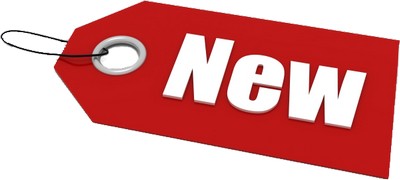
New Product Development - 7 steps of New Product Development or NPD
New Product Development – Process and 7 Stages
New product development is a task taken by the company to introduce newer products in the market. Regularly there will arise a need in the business for new product development.
Your existing products may be technologically outdated, you have different segments to target or you want to cannibalize an existing product. In such cases, New product development is the answer for the company.
Table of Contents
7 Stage Process of New Product Development
1) Idea generation
in this you are basically involved in the systematic search for new product Ideas. A company has to generate many ideas in order to find one that is worth pursuing. The Major sources of new product ideas include internal sources, customers, competitors, distributors and suppliers.
Almost 55% of all new product ideas come from internal sources according to one study. Companies like 3M and Toyota have put in special incentive programs or their employees to come up with workable ideas.
Almost 28% of new product ideas come from watching and listening to customers. Customers: even create new products on their own, and companies can benefit by finding these products and putting them on the market.
Example – Pillsbury gets promising new products from its annual Bake-off. One of Pillsbury’s four cake mix lines and several variations of another came directly from Bake-Off winners’ recipes.
2) Idea Screening
The second step in New product development is Idea screening. The purpose of idea generation is to create a large pool of ideas. The purpose of this stage is to pare these down to those that are genuinely worth pursuing. Companies have different methods for doing this from product review committees to formal market research.
It, is helpful at this stage to have a checklist that can be used to rate each idea based on the factors required for successfully launching the product in the marketplace and their relative importance.
Against these, management can assess how well the idea fits with the company’s marketing skills and experience and other capabilities. Finally, the management can obtain an overall rating of the company’s ability to launch the product successfully.
3) Concept Development and Testing
The third step in New product development is Concept Development and Testing. An attractive idea has to be developed into a Product concept. As opposed to a product idea that is an idea for a product that the company can see itself marketing to customers, a product concept is a detailed version of the idea stated in meaningful consumer terms.
This is different again from a product image, which is the consumers’ perception of an actual or potential product. Once the concepts are developed, these need to be tested with consumers either symbolically or physically. For some concept tests, a word or a picture may be sufficient, however, a physical presentation will increase the reliability of the concept test.
After being exposed to the concept, consumers are asked to respond to it by answering a set of questions designed to help the company decide which concept has the strongest appeal. The company can then project these findings to the full market to estimate sales volume.
4) Marketing Strategy Development
This is the next step in new product development. The strategy statement consists of three parts: the first part describes the target market, the planned product positioning and the sales, market share and profit goals for the first few years.
The second part outlines the product’s planned price, distribution, and marketing budget for the first year. The third part of the marketing strategy statement describes the planned long-run sales, profit goals, and the marketing mix strategy.
Business Analysis – Once the management has decided on the marketing strategy, it can evaluate the attractiveness of the business proposal.
Business analysis involves the review of projected sales, costs and profits to find out whether they satisfy a company’s objectives. If they do, the product can move to the product development stage.
5) Product Development
Here, R&D or engineering develops the product concept into a physical product. This step calls for a large investment. It will show whether the product idea can be developed into a full- fledged workable product.
First, R&D will develop prototypes that will satisfy and excite customers and that can be produced quickly and at budgeted costs. When the prototypes are ready, they must be tested. Functional tests are then conducted under laboratory and field conditions to ascertain whether the product performs safely and effectively.
6) Test Marketing
If the product passes the functional tests, the next step is test marketing: the stage at which the product and the marketing program are introduced to a more realistic market settings. Test marketing gives the marketer an opportunity to tweak the marketing mix before the going into the expense of a product launch.
The amount of test marketing varies with the type of product. Costs of test marketing can be enormous and it can also allow competitors to launch a “me-too” product or even sabotage the testing so that the marketer gets skewed results. Hence, at times, management may decide to do away with this stage and proceed straight to the next one:
7) Commercialization
The final step in new product development is Commercialization. Introducing the product to the market – it will face high costs for manufacturing and advertising and promotion. The company will have to decide on the timing of the launch (seasonality) and the location (whether regional, national or international). This depends a lot on the ability of the company to bear risk and the reach of its distribution network.
Today, in order to increase speed to market, many companies are dropping this sequential approach to development and are adopting the faster, more flexible, simultaneous development approach. Under this approach, many company departments work closely together, overlapping the steps in the product development process to save time and increase effectiveness.










